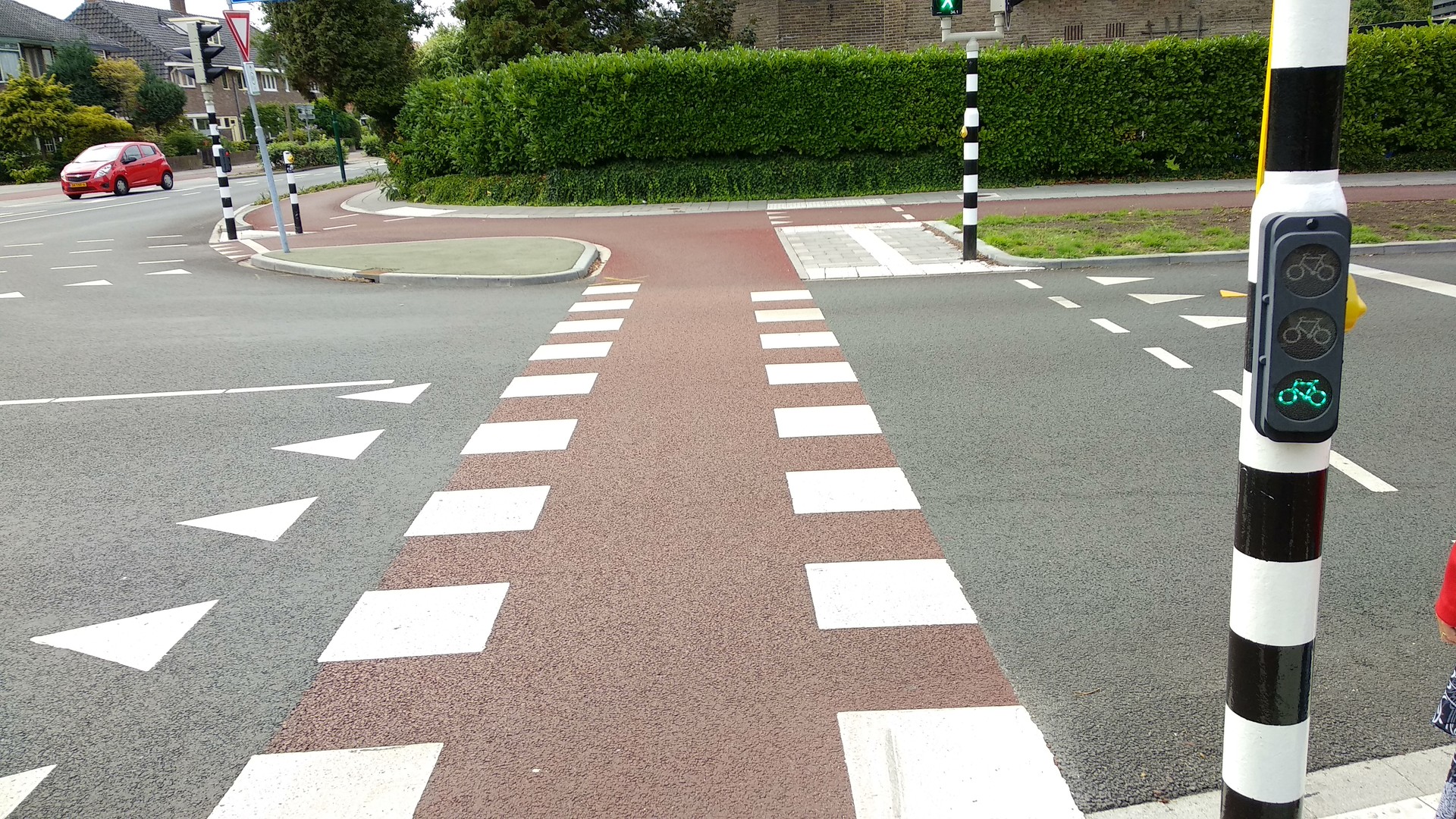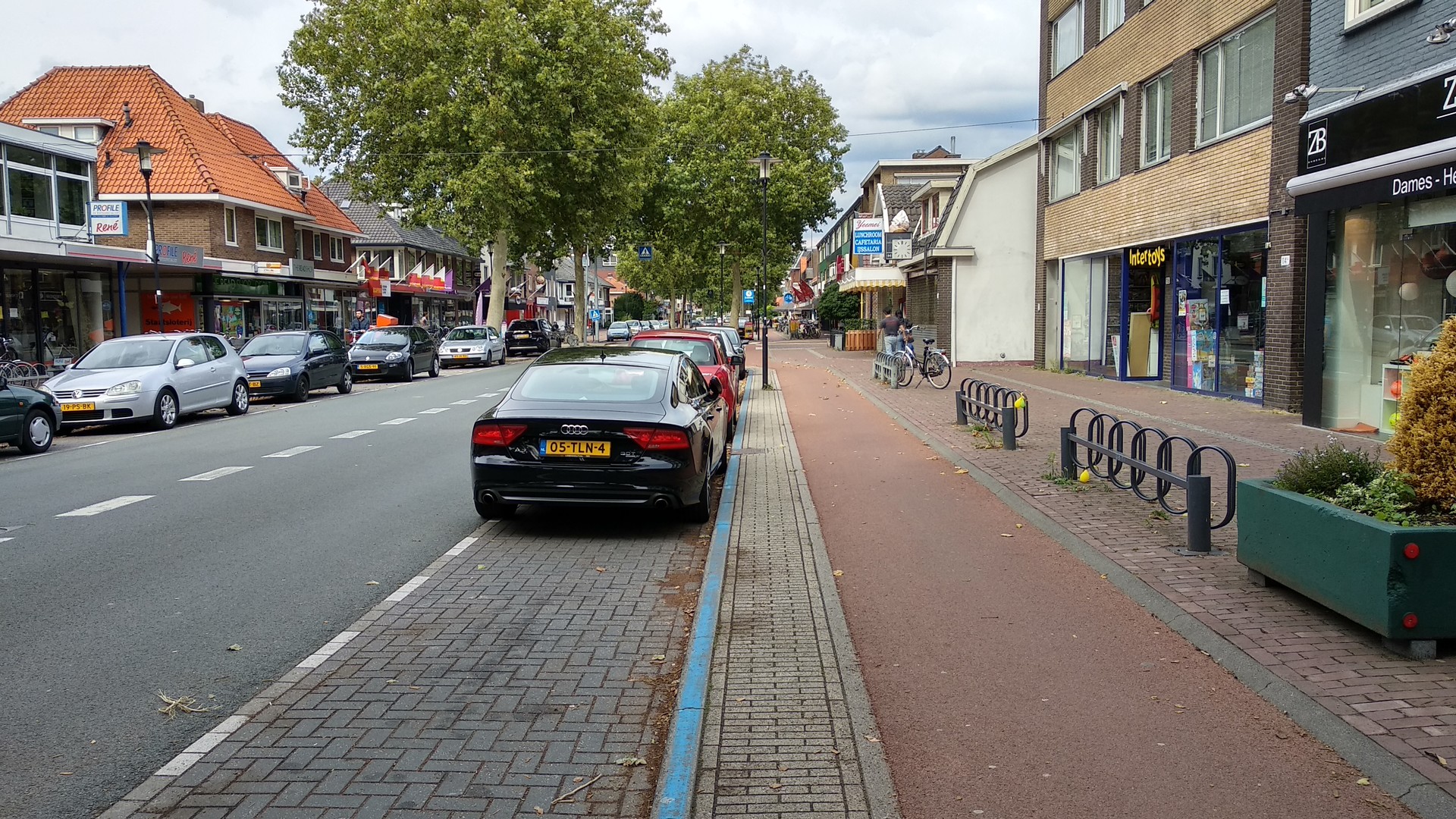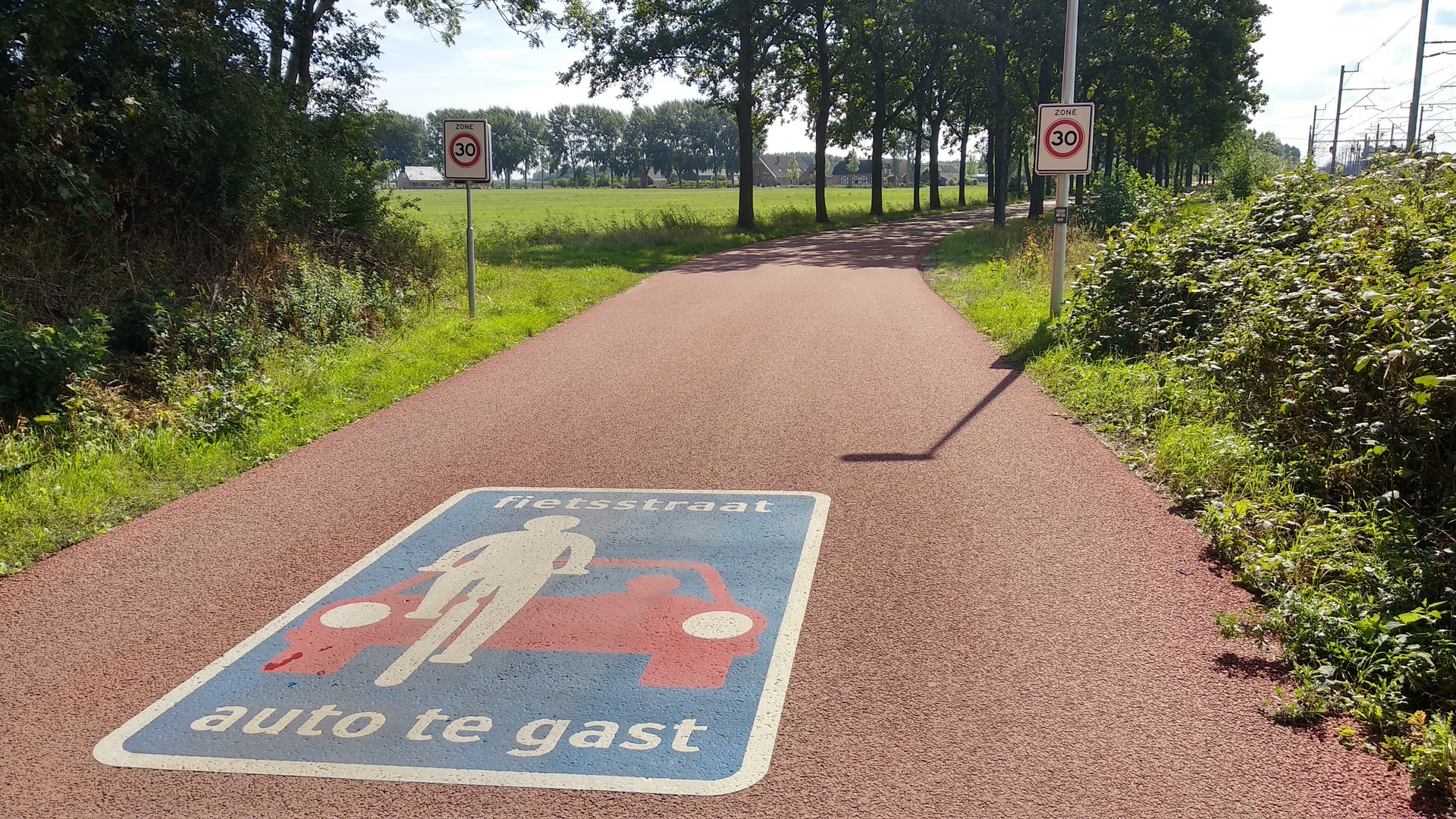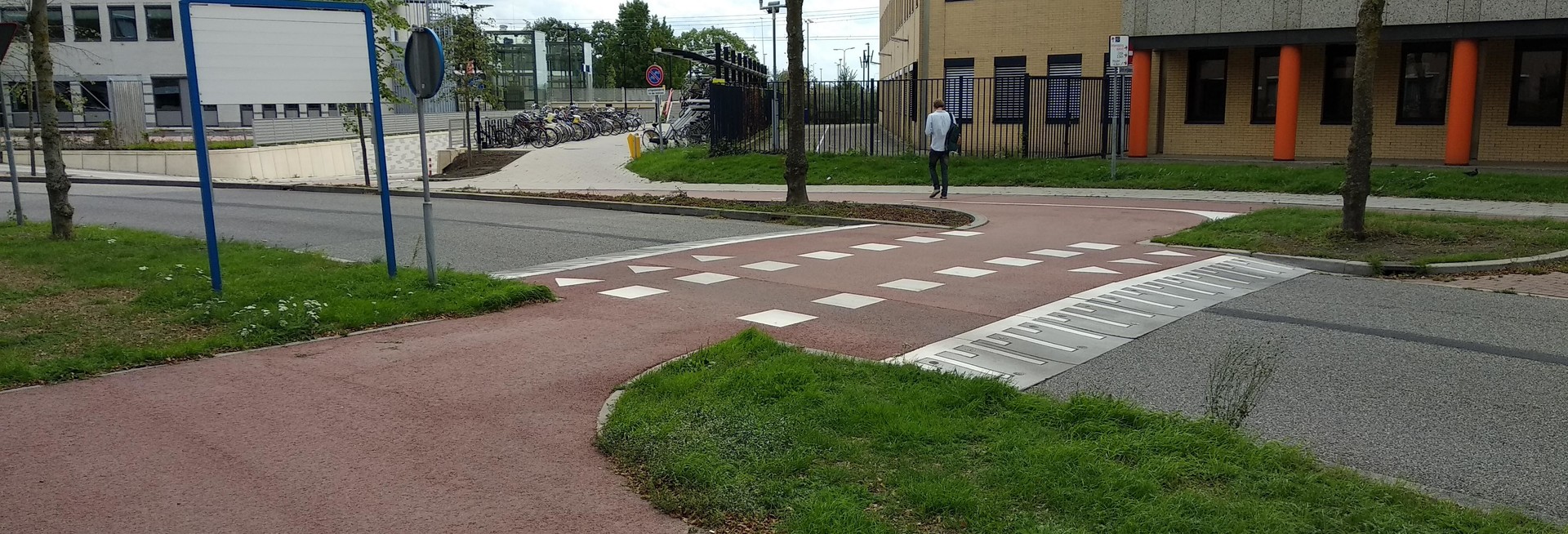Utrecht and Houten
The elevators at the main station of Utrecht are also very large, it is actually pleasant to move around with a bike there. There are gates at the station, so I needed to use one of my exit codes to get out. There was one wide gate for wheelchairs and bikes, no problem at all.
Once I got to the streets I saw wide paved bike paths. Being used to Bonn means that I was really bewildered to see that a city gives this much space to bikes. It certainly is a good thing but seems so unthinkable in Germany. I wonder whether German cities will eventually transform into this but I will not hold my breath for it.
An unusual thing is that scooters are allowed on most bike paths. This did not feel too bad in Utrecht because the bike paths are wide enough.
There are bikes everywhere. So many that you have trouble finding a parking spot which looks secure enough. For the first night I chose a signpost which informed about camera surveillance. I hope that this would be a sufficient deterrent. There are multiple parking garages for bikes, one is subsidized by the government and the first 24 hours are free, then every 24 hours cost 0.50 EUR. This is per parking, so if you just leave it during the nights is completely free. Though one has to be fair and say that it was full when I looked into parking my bike there. For comparison: The bike station in Bonn costs 0.90 EUR per day.
As I was told on the train by a Dutch person I was the only person with a bike helmet in the city. Actually I was also one of few people without their phones on the bike. People there seem to be rather confident in either themselves, everyone else or the infrastructure. You see people with phones in Bonn, but not at this scale. If you would combine the cyclists from Utrecht and the car drivers from Bonn into one city, I would fear that people get killed. I happen to yield to every car and the drivers seems bewildered and wait for me. I wonder how many days one needs to get used to the ease of cycling there.
On the first day I drove around around 16 km and had a look at the southwest of the city. There is a really nice bike bridge that has a ramp going over the school.
When I went for dinner I was not sure whether the 12 EUR cash that I had on me would be sufficient. Before ordering I wanted to ask for credit card payment. On the door it said:
PIN & credit card only
In Dutch one calls debit cards just "PIN" because you enter that when you pay. It is not that the Netherlands are so advanced, it really feels that Germany is behind in these things. The one boulder place had debit card payments only for 10 EUR or more. Therefore I always carry cash in Germany, but here it seems so unnecessary. Also they do not use 1 and 2 cent coins any more because they are essentially worthless and with rounding you average out at the same anyway. And if you want to pay exact, you can do so with card.
For Utrecht I have booked two nights in the Stayokay Utrecht Centraal hostel. It is really close to the train station and makes a very modern appearance. Each bed in the dormatory had a locker or a storage chest, but one would have bring a lock. Also there is no soap or towels like you have at the A&O Hostel.
One great thing about the bike lanes in the Netherlands is that they are not broken up at intersections. Instead the people crossing it have to drive up and down a ramp. Take this example where there is a level bike lane and ramps on either side:
The water through the city is very nice as well, this is in front of a restaurant where I had dinner:
A long time ago the cycling infrastructure in Germany was separated from cars. In intersections this has led to accidents where car drivers that did a right turn did not see the cyclist going straight. The conclusion was that cycling on the road was safer. With the cars getting wider and their drivers not giving enough space when passing, I long for a separated infrastructure. Intersections can be made safer by using the Dutch right-angle intersection approach:
The crossing for the bikes is moved away from the intersection a bit. This means that cars and bikes meet at a right angle and seeing them becomes easier. This combines the advantages of separated lanes with more safety. The downside is that you cannot go as fast, but the curve radius is generally large enough for moderate speeds.
A second great thing is that on most streets there are no parking cars. And when there are, they are between the driving cars and the cycles.
Here one has sufficient separation against carelessly opened doors and parking cars do not cross the bike lane.
There are some roads in Utrecht where one has parking cars and just a narrow strip with a dashed line to it. This is the standard in Bonn. The difference is that I have only seen those in zones with 30 km/h. Once you leave the city there are separated bike lanes again:
Houten
On the second day of my trip I rode to Houten, a district near Utrecht.
In a news article about bike friendly cities I learned about this district. It was not designed primarily for the bike but rather for people. A place worthy of living in and not just driving through. It just happened that the bike became the primary mode of transportation there.
There are real bike roads there. Germany has these "Fahrradstraßen" but they usually come with a "cars allowed" sign. In reality these roads are just like 30 km/h zones but count towards the bike statistics. Here in the Netherlands the slogan of the "fietstraat" is "auto te gast": cars are just guests there. The same also applies to their German counterparts in theory, but that usually does not pan out. Also politicians and city planners do not seem to have the courage to declare major roads as bike roads.
German traffic regulations say that only cars that have their start or destination within the bike road may use it. In Bonn there are bike streets like the Ennemoserstraße or the Nassestraße which are frequently used by people getting through. In the Netherlands this is sometimes enforced by blocking the cars halfway:
Another important aspect is the right of way. The Dutch bike roads are often priority routes and have the right of way at every intersection. This means that you can just ride your bike with constant speed and cars have to stop for you. On many occasions I habitually slowed down only to find a patient car driver waiting for me.
Take the following example where a two-way cycle path splits to either side of the road. The cyclists have the right of way!
This feels complete unthinkable in Germany. For the Netherlands this is also not the norm. I found similar setups where the cyclists have to yield to the cars. This shows how cool Houten is.
There are also roads for cars in Houten. In these cases there are tunnels for cyclists. And on this intersection there are four tunnels such that cyclists are bothered as little as possible.
In Germany somebody would have slashed the budget and only build three tunnels and lets cyclist ride a full circle instead.
Also Houten has been awarded "fietstad 2018" (bike city 2018) by the Dutch bike association. In contrast Bonn wants to be the bike capital of Northrhine-Westphalia by the year 2020. They seem to have noticed that this takes work and cuts for cars, so they do not push for that noticeably any more. I wonder how far Bonn is from being awarded the same thing from German ADFC, let alone the Dutch bike association.











